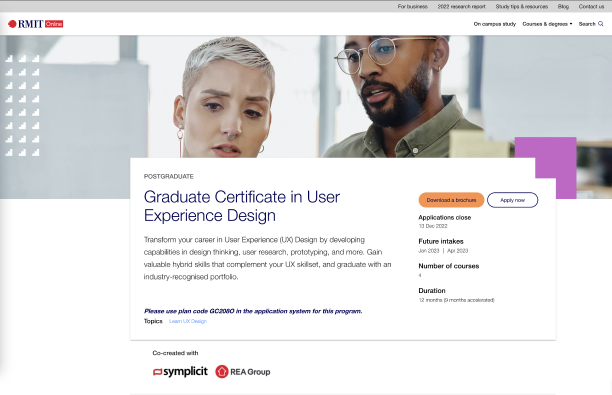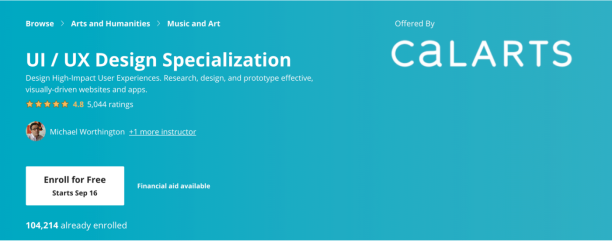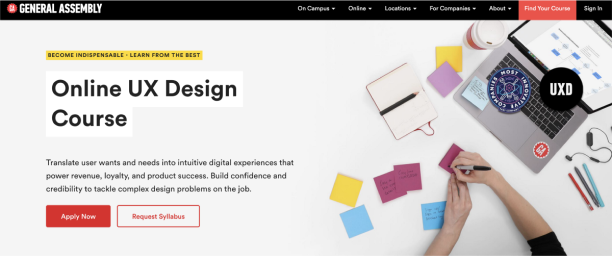Written by Sally Kim, Vu Long Tran and Weiming Sun
Starting your learning journey in UX/UI Design
Welcome back to our three-part series about beginning your career in UX/UI Design in 2024. Now that you’ve potentially decided that a career in UX/UI is for you, let’s take you through some considerations to ensure you have all the information you need.
This segment is dedicated to exploring the various pathways which you can use to enter the UX/UI Design industry. We’ll explore each of these in further depth, outlining the opportunities and differences between them – and we’ve also gathered some willing Mantel volunteers, who’ve each put together a few words on their own journey to share with you.
This is the part where our stories and paths can wildly deviate – as you’re about to find out. There’s a lot to soak in, so we’ve made the conscious decision to leave the focus of this installation on the many different paths available to you. Please, take your time to explore everything we’ve put together for you, stay tuned for the next one, and as always, if you see something you’d love to initiate a conversation on, please don’t hesitate to reach out to us.

Above: There are so many peaks to climb in the field of UX/UI Design, and so many different paths to get there. These are just some of the ways our designers at Mantel have carved out their own path, or followed along with some who have come before them.
Different ways to prepare for, and enter, the UX/UI Design industry
There are a multitude of ways for you to start your career in UX/UI design, be it studying early in your career, making a lateral transition later in your career, or returning to the education route later on in your journey. Here, we’ll outline some options through an educational or work experience-based pathway that can help you either prepare for, or enter, the UX/UI design industry. There is no reason to go with one or the other; in fact, most people will combine the two of them in some fashion.
What does a UX/UI Designer actually do?
An education pathway normally entails you doing a bit of learning and studying before you transition into the industry. They are a great way to build solid theoretical foundations for the design space, before you transition to putting it into practice through your course work or work experience. Some options include:
- Graduate with a university degree
- Enrol in an online or in-person short course
- Enrol in an online or in-person bootcamp
University degree:
Although we do not have dedicated degrees for UX/UI design (you wouldn’t see a Bachelor of UX/UI design), there are many design oriented courses that have UX/UI design as a component of the learning whilst teaching you other complementary design foundations and skills as well.
- Swinburne University – Bachelor of Design with a major in UX Interaction Design
- Curtin University – Bachelor of Arts (Digital Experience and Interaction Design Major)
- University of Sunshine Coast – Bachelor of Design
- RMIT – Graduate Certificate in User Experience Design
To just name a few.

Above: The RMIT Graduate Certificate in User Experience Design is co-created with industry input, from Symplicit and REA Group.
Short course:
Short courses can be done both online and in-person, and tend to focus on one skill as opposed to a larger skillset like bootcamps do. They are generally more likely to be self-paced, allowing you to do them for a few hours a week in your own time, whilst bootcamps can be a part-time or full-time weekly commitment. Short courses are plentiful and can be found at Universities, TAFEs and online learning platforms such as Udemy and Coursera.
When assessing a short course you should consider:
- Is it well-reviewed, and have others had a good experience and bang for their buck? Can you talk to anyone within your network who’s participated in this course, or is there anyone you could reach out to, to discuss it?
- Is the course self paced using pre-recorded content, or will you need to attend structured classes online or in-person with a teacher?
- How much does it cost, in both time and money, and are there any concessions, student discounts or scholarships you could apply for?
- Could you complete the course in the free trial period and save some money?
- Does it tackle the skills that interest you? (We explore more about UX/UI design skills in the next section)

Above: Coursera’s UX/UI Design Specialisation is offered by CalArts, and is a fully online course.
Bootcamps:
Bootcamps can also be done both online and in-person, but focus on building the student’s foundational skillset in their chosen field. It’s often a more structured commitment, with regular classes in a part-time or full-time capacity, and usually running for at least a 3 month period; part-time bootcamps will usually go for 6 months or longer.
Whilst we don’t endorse any of the below courses, they are highly rated, and some of our own team members have completed the below:
- Udemy: Complete Web & Mobile Designer in 2022 (Self paced)
- Coursera: UI/UX Design Specialisation (4 months)
- RMIT University: UX + UI Design online course (6 weeks)
A big selling point of bootcamps is that students will study and work alongside professionals who are currently in the field, and have a chance to build out their portfolio with real projects. There are also likely to be more chances to interact with other students, tutors and mentors within the structure of the bootcamp.

Above: There are a few Mantel designers who have completed the General Assembly UX Design Immersive.
Work Experience pathway
Of course, there may be those of you out there who are feeling ready to move beyond education experiences, and begin dipping your toes into the industry. As with education, there are a myriad of ways in which you might put your skills and knowledge to use, each with their own positives and negatives, and each pointing you in a slightly different direction. We’ll cover the majority below:
Firstly, work experience-wise, you could:
Move laterally within your current company, or to a different company, towards a more UX/UI design-oriented team
If you already work at a company in the digital space, you might be able to align more closely with the design team, rather than having to go elsewhere for that exposure. This can help smoothen out that transition process, not only from an experience perspective, but also from the business side of things; even as you’re learning more about, and getting more involved in, the digital sphere, you’re still providing a level of value aligned with your background in other fields.
Moving laterally can be another great way to get your foot in the door, start contributing to some UX/UI design work, and it also covers a really important topic as well – not designing in isolation. If you’re coming from a different background within the same workplace, there will for sure be an opportunity to flex the combined strength of your prior experience, and your UX/UI design knowledge as well. The epitome of a low-risk, high-reward strategy.
Get involved in hackathons
If you’ve spent time on LinkedIn, you might have seen the odd call for participants for hackathons – or perhaps you’ve seen some of your connections post about internal (or external) hackathons they’ve participated in. A hackathon is a short event, usually no longer than 48 hours, where teams of people work together to produce an MVP; a “minimum viable product”. These hackathons can be in any industry, but the most common ones are related explicitly to tech, such as medtech, finance tech, etc.
Above, from Weiming: “Almost everything I know about hackathons, I learnt from the 2019 Netflix Korean drama ‘Start-up’”
As with anything, there are pros and cons to hackathons: they are a short, intense burst of experience that can be similar in application to a sprint you might do in agile software design, though for the duration of the hackathon you will most likely be expected to dedicate almost every waking hour to your work. Timing of hackathons can also be inconvenient, as they frequently run over weekends. The support network around hackathon teams depends on the hackathon organisers – the two most common setups are either mentors that are assigned to individual groups, or floating mentors, where the initiative is placed on your shoulders to reach out and engage them.
The positives of participating in hackathons include the chance to gain a really wide set of experience across all parts of the design process – from interacting and working with developers, product managers and product owners, and other designers, to presenting and arguing for your work and the direction you’ve taken, both in design and as a team. Hackathon team setups are usually quite flexible and focused on working lean, and you may frequently get the chance to work on other aspects of product development outside of design.
Offer your services up for pro-bono work
When it comes to pro-bono work, you’ll most likely be able to find plenty of these opportunities in places like start-up communities, or within the NFP sector. Indeed, General Assembly client projects are done on a pro-bono basis – and there are some within Mantel who have also partaken in pro-bono work as well. Pro-bono work can quite often be found in startup communities – some good places to look include the StartSpace community, hosted at the State Library of Victoria, or UTS Startups, in Sydney.
The scope of your work will most likely be focused on a specific project, and your tenure should also be explicitly stated – this is a situation where you will most likely want to sign some paperwork, just to make sure everything is above board, and that you aren’t left with a bad taste in your mouth.
The experience that doing pro-bono work can bring you is similar to a hackathon – there will most likely be opportunities to be involved across multiple parts of the design process, as well as in different parts of the organisation for which you’re working. Whether or not there is support for you, however, will depend on the organisation. Navigating ambiguity, getting stakeholder buy-in and establishing team dynamics might be more nuanced when working pro-bono, but at the same time, these are all essential parts of a UX/UI designer’s kit. If you decide to go down this route, and need some help and guidance that can’t be provided from anyone within the organisation, don’t hesitate to look externally for mentorship.
Examples of different career paths
Below, we’ve gathered some examples of Mantel Group team members’ journeys into the world of UX/UI Design. They’ve all started their careers in using different combinations of the pathways we just discussed.
Bootcamp based – Weiming
“My background is in the built environment – specifically, Architecture and Urban Planning and Design. Architecture school was, frankly, quite a pain – I decided, after three long years, that it wasn’t the right course for me. With that, I took a different direction, and moved into Urban Planning and Design. I very much enjoyed viewing the urban landscape from a more theoretical perspective, and understanding the different ways in which towns and cities could be developed – which was probably the first instance of me enjoying problem solving and research.
“However, the prospect of sitting in a local council reading legislation and approving planning permits all day long was most definitely not my cup of tea. On the side, while I’d been studying, I had picked up a love of photography – and, upon graduation, I decided to take a leap of faith, and dedicate myself to the arts. I spent a few years as a photographer, working a range of positions, some freelance, some in-house. It was a very enjoyable time in my life, but I found myself wanting more out of my career.
“And so, I hopped on the old General Assembly bandwagon. 12 weeks, 9-5, learning the “ins and outs” of UX. It had its ups and downs, as any educational experience generally does. Something that I will say is that, in hindsight, I think it’s so important to maintain an open mind throughout the education process – we sometimes forget that UX is so very contextual, and when you’re being “taught” UX, you’re not being exposed to The Truth, you’re being exposed to a truth – of which there are many, depending on how you look at a problem.
“What I appreciated the most about my experience with General Assembly was the kinship that I felt with the other people in my course. It felt like we had all decided to take a monumental step in our careers and lives together, and in that way, we could all see a little bit of ourselves in each other. It helped form genuine connections – but also had an impact from a UX point of view as well. As I mentioned before, so much of UX is about perspective – but, in a way, being able to adopt different perspectives means you have to be able to empathise with, and understand, different people – and it helps when you can see a little bit of yourself in them. My course was fully remote, but the Melbourne-based people from my cohort still meet up from time to time.
“Now, onto the golden question: Will General Assembly (or any bootcamp, for that matter) prepare you for life as a designer? I believe that it will – but only if you don’t necessarily take everything you’re taught at face value. For example, you might receive a very process-driven education in UX – and that may very well be a reflection of the experience that your instructor has been through. But that experience may not also reflect the direction you want to go in – like life at an agency or a consultancy. Sometimes, you need to be light touch on certain parts of the process, in order to keep your project ticking over.
“One of the things that I struggled with when first starting as a designer was where to draw the line between being process-driven, and outcome-driven. This is also not to say that if my instructor had advocated for a mix of process-driven and outcome-driven approaches, I would have been able to navigate the difficult situations I encountered perfectly; there’s always an element of learning how to navigate these things yourself. However, it might have been a bit of an easier situation.
“To all you budding designers: keep your minds open. Always strive to see problems from other perspectives. Don’t be afraid to challenge the established order. And, most importantly – have fun while doing so!”
Short course combo – Sally

“I started off my undergraduate degree with a Bachelor of Psychology and I’m embarrassed to admit that I actually didn’t realise psychology was a science until I was a few weeks into my degree. Unsurprisingly, I didn’t end up staying the course until the honours year and I graduated with a B. Arts with a double major in psychology and biblical studies and a firm conviction that clinical psychology wasn’t the field for me.
“A few years of soul searching and career switching later, I was working at a dental clinic as a receptionist and a few seemingly random graphic design requests from management later, I decided I wanted to become a designer, but what kind of designer?
“UX was still a little bit of a lesser known field back then, but after reading some course descriptions I took the leap and enrolled myself in a one week UX intensive at General Assembly (controversial opinion but my instructor actually told us that the intensive was the best mode to learn UX at GA). Safe to say the week was pretty life changing and, thanks to a super passionate instructor, an awesomely encouraging cohort and a realisation of how UX could marry my background in psychology and my love for design, I decided to continue to pursue this path.
“Wanting to upskill a little bit more before embarking on my job search (a lot of my cohort at GA were actually experienced designers and developers so I felt a bit like an amateur throughout the week), I enrolled in a 6 month Certificate IV in web based technologies at TAFE. And although I can’t say I remember or use all of the content/skills taught in this course, this helped lay the foundation for a basic understanding of front end development, which has become invaluable in my communication of design requirements to developers.
“Do I recommend the training path I took? Looking around at most of my colleagues at Mantel Group, it seems that the norm is that most of them have completed more extensive bootcamps or immersive courses specifically in UX before making the career change into the field. But from my experience, UX is a field in which there are endless permutations of training paths you can take in order to equip yourself. My knowledge of the UX design process and design tools may not have been as developed by the end of my short course combo but my overall knowledge of web technologies and coding has definitely helped me to become besties with the software engineers in my delivery teams.”
University based – Nicole

“I chose to study a Bachelors of Psychology degree with a vague vision that I wanted to help others within the mental health space. Little did I know the reality of clinical psychology – the arduous pathway and level of mental resilience required. At the same time, I have always loved art and found myself getting caught up with structuring powerpoints etc. I took a year off to do a diploma of Graphic Design and learned the foundations of visual design. While I really appreciated creating aesthetic pieces, I couldn’t help but seek more mental stimulation and problem-solving challenges. I missed the scientific, structured approach and the musings of human behaviour in psychology.
“I graduated, I started to hear the term UX more as I started job-seeking and it immediately resonated with me as it was the perfect blend of psychology (science) and graphic design. I started out my search naively and narrowly searched “UX design / “visual design”. Of course, I was bound to fail with my zero UX experience and average graphic design focused portfolio. With enough failures and few junior UX design opportunities found, I broadened my scope and seeked unpaid (graphic design) roles or roles that would at least gain me transferable skills into UX. At the same time, I tried networking a little to find UX opportunities.
“Each person’s journey is so different but perhaps you could be comforted with some of my learnings (mainly with the job search process).
- I learned to be patient and trust the timing of things. When I stopped fixating on expectations and timeline, I was more comfortable with taking baby steps and was more at ease to showcase my personality and skills.
- Some things may not seem like it was not working out at the time but upon reflection, I was unconsciously learning about myself and becoming resilient.
“Some helpful things that worked for me were:
- Don’t undermine the transferable skills you have. Although I never did a UX bootcamp and have a listed set of “UX” skillset, I broke down the skills I’ve learned through psychology degree and honed in its applications in the UX context during interviews/design challenges.
- Seeking out opportunities that allow you to learn UX transferable skills – taking baby steps is totally ok!
- Try exploring different forums / meet-up groups where there are some “hidden” opportunities not advertised to the public.”
University based – Stuart

“I knew pretty early on that I wanted to do some sort of Design. For a while I definitely thought that I would follow an Architecture route, but at the last moment I made an in-the-moment decision to switch to Industrial Design at Monash University. It was one of the best decisions that I have made in my life. Funnily enough, UX and UI was not really too much on the radar for me at this point, there were a few projects that we incorporated a digital element into, but for the most part the course was heavily focused towards the physical environment and tangible products that could be mass produced.
“As I made the way through the course though, I gained some more exposure to the industrial design industry in Australia and I couldn’t help but be disappointed with what I saw. Whilst there were opportunities to do groundbreaking and exciting work within industries that could really help people, these were few and far between and the reality of generating much more mundane and useless products seemed to be one of the few realistic avenues of industrial design without having to move overseas.
“Throughout this period though I came to understand that what I really loved was the process. To me it didn’t matter if the outcome was digital or physical, the idea of getting into the weeds, talking to people, solving problems and providing beneficial solutions was something that transcended the mode of output and I began to explore other options within the industry. By now I had just finished my Honours year in Industrial design, and after some experience in an industrial design internship I decided to shift my focus towards UX and UI.
“Fortunately enough, this industry is booming in Australia and I was excited by the prospects of being able to do meaningful work that I could feel proud of. Industrial design in many respects is almost exactly the same as UX design, the end results just being a set of different outputs (digital vs. physical). Because of this the transition across for me was very seamless and after completing a UX/UI design refresher short course and putting in some hard work and networking, I was able to land my first UX consulting gig.
“Certainly the commitment of a four year degree vs. a short bootcamp often sees the boot camp pathway as being an easy choice for them. I also strongly believe that you do not need to have a university degree to do the work that we do either, as the non-formalised resources available today and the fruits of hard work and determination can get you incredibly far in this industry. But for me, I think university made me a better designer.
“The ability to explore creativity over long form projects, fine tune and try out different approaches to problem solving, and exposure to different ways of thinking over longer periods of time and across a wider range of people, has helped to shape my perception on problem solving. Similarly, the more technical elements of high quality and neat presentations, communication and public speaking as well as theoretical lessons that help you to understand design history, are all part of a broader narrative that have shaped me, my approach and how I view my place in the design industry.
“As with any big decisions, it’s important to understand what is best for you. The paths that we walk as designers are all ultimately leading us towards the same place, but it’s the environments that you put yourself in that make you the designers and people that you will be of the future. So keep your minds open and always follow the pathway that offers the most to you, and with dedication to the job at hand and by always looking to learn and grow as a designer and person, anything is possible.”
Job based – Niharika
“My path into the world of Design Thinking has been anything but straightforward. I have always been interested in people, their motivations, behaviours, and trying to figure out how to make things better – so naturally gravitated towards studying psychology at university. Fast-forward 3 years after I graduated with a Master’s degree in Psychology, I went from working in not-for-profits in the disability sector in New Zealand to working for one of the biggest corporate organisations in Australia. To say it was a massive shock to the system would be an understatement.
“I ended up working in financial services for almost 8 years (definitely not planned). It was a big eye-opener for me because it made me realise first-hand the importance of good organisational system and process design and what that can mean for employee and customer experience.
“I started my journey in the depths of customer service: making my way through the call centre and settlements teams. Within a couple of years, I found myself getting more and more frustrated by the repetitiveness of the job, the lack of influence over my environment and an inability to use any of my previous skills in these roles. This was a huge catalyst for me to start exploring what else was out there: I didn’t know what role I wanted, but I did know what types of qualities I was looking for.
“I ended up moving into Marketing, thinking that it would be a lot closer to the customer (I was wrong). I had a lot of stakeholders, ran a few marketing campaigns, and there were some metrics involved (but we never really knew if our campaigns were the cause of the great results or just good timing).
“Another couple of years on, I knew I needed to move again – and that’s when I really started getting my head around CX. I had lots of chats, read a few articles, and knew that the CX team at my company was growing – so put my hand up for a role. Looking back, it feels like getting the job was the easy part – the hard part was actually learning on the job and trying to figure out what CX and UX really are (and how to use them). I felt extremely out of my comfort zone at first (and later realised that this was a key part of the job description) – but I was lucky to have some awesome people around me. I love that as a designer that you constantly adapt to new environments and challenges – which means that you’re always learning and evolving your skills.
“Some of my key learnings (in no particular order):
- Realising that your design ‘tool kit’ is basically just different techniques you can use to help get information/outcomes you’re looking for, and can be learnt over time
- Asking questions is a good thing – and not being afraid to say that you don’t know something, that’s how you learn
- Saying yes to things even if you don’t feel ready – early in my design career I helped facilitate a group of people through a design jam over a weekend. It was incredibly nerve-wracking and I felt like an imposter the whole time, but I learnt so much (and thankfully so did the team)
- Templates are so important! You don’t need to do everything from scratch
- HCD is about people and understanding their mindsets and needs before designing something beautiful
- You don’t need to be a ‘designer’ or an artist to be a designer – it’s about trying to find different ways to communicate your idea (and not obsessing over making it perfect)
- The jobs you’ve done before aren’t redundant – your previous experience and skills (especially the soft-skills) are transferable and can give you a unique perspective that others may not have.”
Closing thoughts
Hi everyone! Weiming here.
Phew. That’s all the content for this installation. Hopefully you are’t feeling too overwhelmed! One of our objectives with this segment was to expose exactly the kind of variety in background that many designers have these days – and I hope we’ve managed to achieve this.
From a personal perspective, design is so much about making a human connection with people, regardless of whether they’re users, customers, stakeholders or fellow designers – and I’ve always found it so fascinating that there are so many people, from such a wide field, that have felt drawn to UX/UI Design. In a way, not only do I count myself as one of them, but I also feel a kinship with them; at some point in our individual lives, we were discontented with what we had, and yet were also hopeful for a different future, motivated to achieve that future, and believed that we had that potential within ourselves. It’s enough to be able to make that very first connection with someone, and that’s usually the connection that leads to a far deeper understanding of other people.
I’ve asked the people included in this article if they’re open to readers reaching out to them discussing their experiences, and I’m happy to report to you that each and everyone of them is more than happy for you to find and connect with them on LinkedIn.
I think that’s enough waffling on from me – hope you enjoyed the read, we’ll catch you in the next one.
